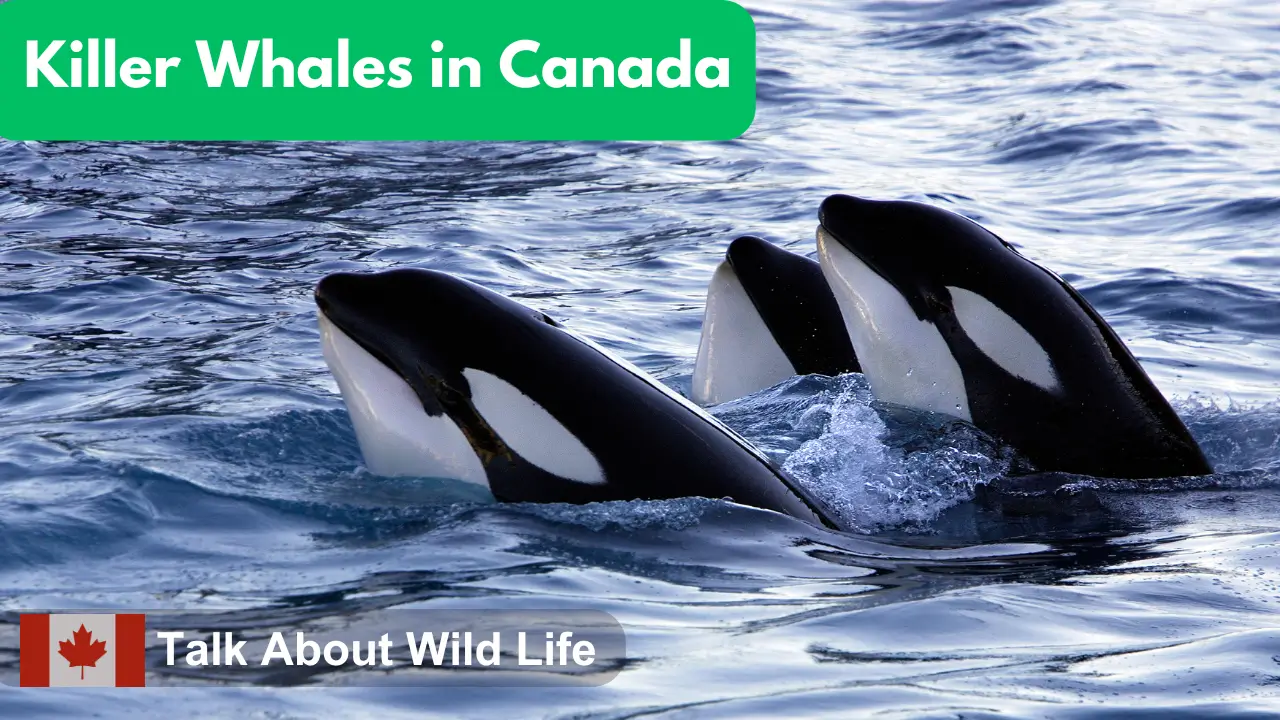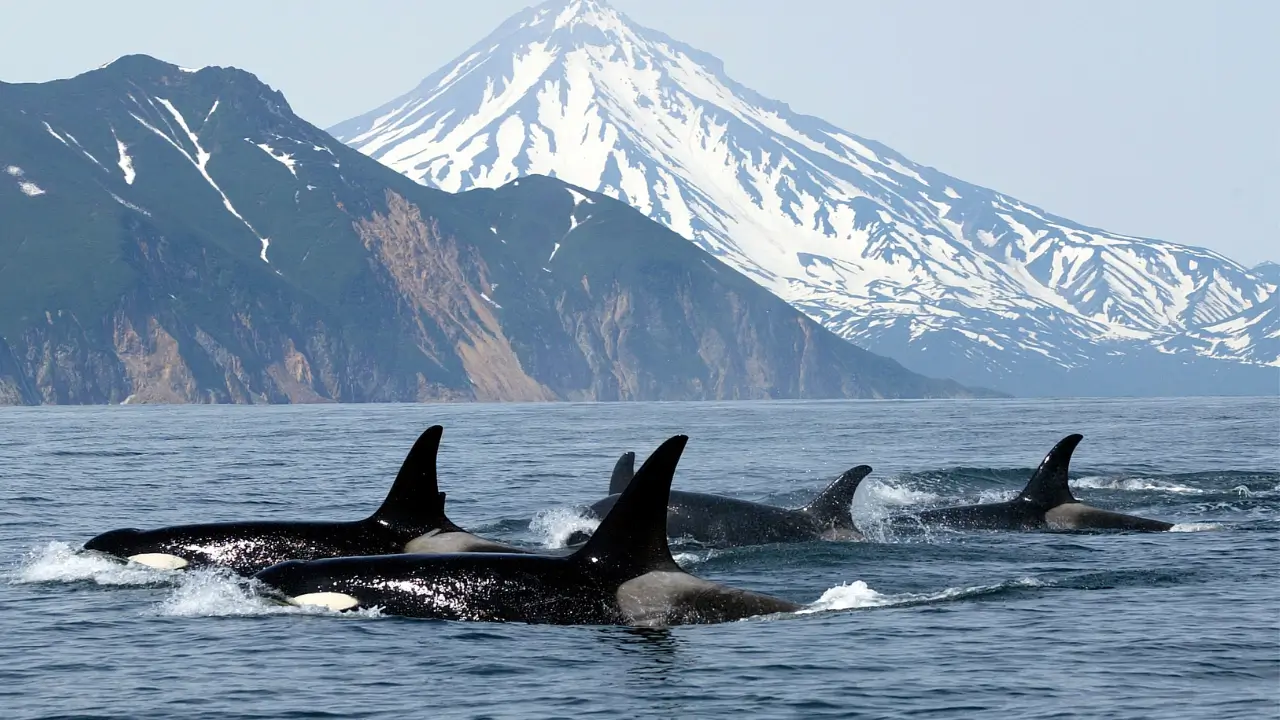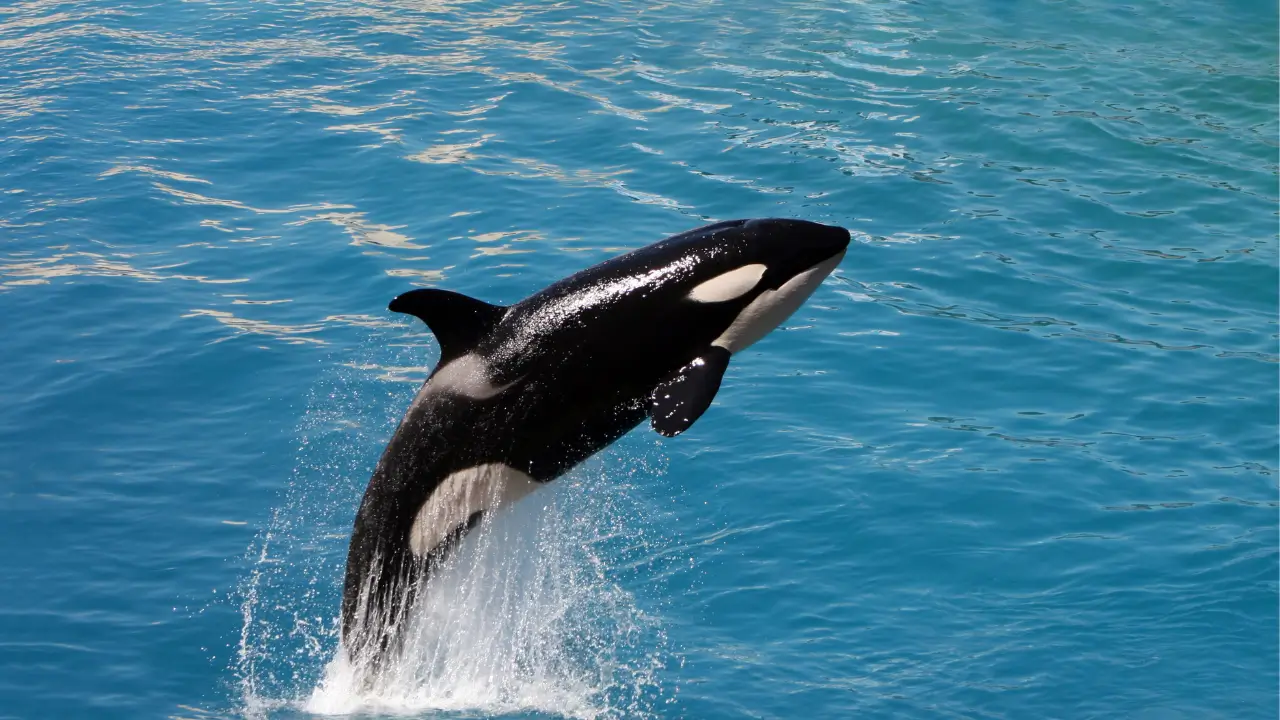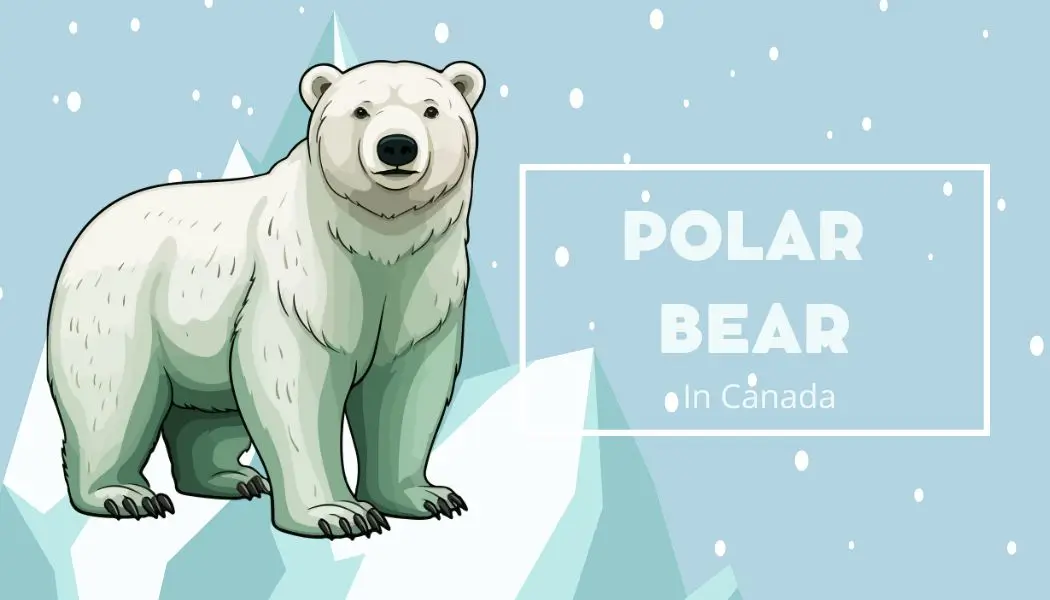Killer whales are big sea animals and are black and white. They have a white patch behind each eye which makes the recognition easy. Killer whales are very smart animals because they possess big brains. Killer whales live together in family groups called pods. Even though their name is killer whale, they do not kill people.
As the largest members of the dolphin family, killer whales sit at the top of the marine food chain in Canadian waters. These intelligent marine mammals are a major attraction for whale-watching tours, especially off the coast of British Columbia on the Pacific side.
Physical Characteristics and Aspects
Below are some of the visible characteristics of these giant sea creatures:
| Features | Relevant Information |
| Scientific Name | Orcinus orca |
| Life Span | Average life span for males is about 30 years For females, it’s about 50 years. |
| Diet | Fishes (Salmon and Tunica), Squids, Seals, Penguins, Sea loins, Sharks |
| Length | Males can grow up to 10 meters while females can grow up to 8.5 meters |
| Average Weight | The average weight of males is about 9000-10000 kg Females weigh around 7500 kg. |
| Other Name | Orca |
| Role in Ecosystem | Nutrient recycling, food chain maintenance, and regulation of climate |
| Status of specie | Endangered |
Interesting Facts About Killer Whale
There are some fascinating facts about this attractive species that will force you to view and capture it in pictures.
-
Intelligent Hunters
They work in coordinated groups to hunt prey and have been observed using various strategies, such as guiding fish into tight balls or intentionally grounding themselves to catch seals.
-
Distinct Populations
Different populations of killer whales exhibit unique behaviors, vocalizations, and even physical characteristics. These distinct populations are often referred to as “ecotypes,” and they are believed to have adapted to specific prey and environments.
-
Inherited Society Rules
Killer whale societies have females forming the core of a pod. The eldest female leads the group and passes down knowledge and hunting techniques to younger generations.
-
Master Predators
Killer whales are master predators present at the top of the marine food chain. They have no natural predators and play a vital role in maintaining the balance of marine ecosystems.
-
Impressive Jumps
Killer whales are known for their impressive aerial displays and these behaviors are thought to be related to communication, hunting, or play.
-
Communication Pattern
Killer whales are highly vocal animals, producing a variety of clicks, whistles, and pulsed calls for talking to each other. This pattern is also delivered to the lower generations.
-
Cultural Significance
Killer whales hold significant cultural importance for many native communities in Canada, particularly along the Pacific Northwest coast. They hold significance in art, stories, and traditions, and their presence is closely tied to the cultural identity of these communities.
-
Extremely Long Lives
Killer whales have a relatively long lifespan compared to other marine mammals. In the wild, they can live up to 80 years or more, with females typically outliving males.
Sightseeing of Killer Whales
Killer whales are not pretty easy to capture because they mostly stay underwater, but they inhabit the following regions of the country:
| Direction of the Country | Places Where Killer Whales are Found |
| Western Coast | British Columbia (Vancouver Island, Johnstone Strait, Gulf Islands, Tofino) |
| Eastern Coast | Labrador Sea, Newfoundland, New Brunswick, Bay of Fundy, Lawrence River |
| Northern Coast (Arctic Regions) | Hudson Bay, Canadian Arctic Archipelago |
The dynamic behavior of killer whales makes it tough for visitors to spot them but the following months can be ideal for seeing them;
| Region | Months for Sightseeing |
| On Eastern Coast | July and August |
| On Western Coast | June, July, and August |
Following are some precautionary measures that must be taken to prevent harm to your life because wild animals cannot be trusted to cause any harm.
-
Distance
You should keep a safe distance of at least 100 yards.
-
Approach
Don’t approach or pursue them.
-
Water Entry
Avoid swimming or entering water.
-
Behavior
Remain quiet and calm also avoiding sudden movements.
-
Interaction
Don’t feed or attempt interaction.
-
Habitat
Respect their habitat and avoid disturbances.
-
Regulations
Follow local regulations and guidelines.
For the best chances of spotting killer whales, it’s recommended to join organized whale-watching tours or seek guidance from local experts familiar with the current sightings and migration patterns in the area.







